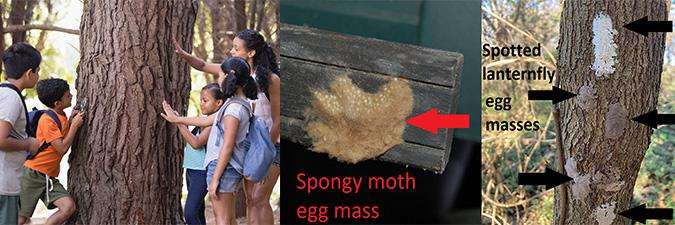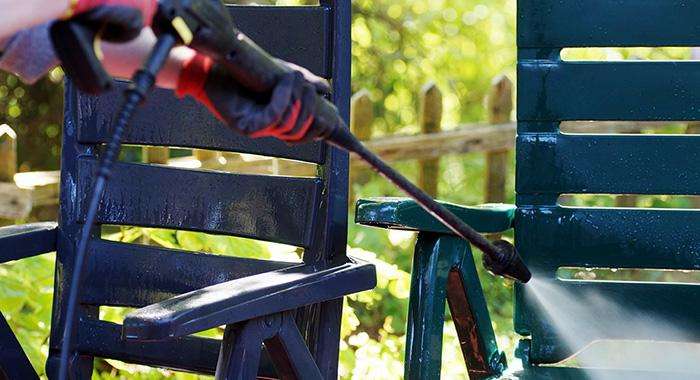USDA Asks Residents to Look for Invasive Egg Masses

Press Release
Contacts:
Cecilia Sequeira, (301) 851-4054
K.Cecilia.Sequeira@usda.gov
Suzanne Bond, (301) 851-4070
Suzanne.M.Bond@aphis.usda.gov
WASHINGTON, March 15, 2024 – Help the United States Department of Agriculture (USDA) stomp out invasive pests this spring! Challenge your detection prowess: Look for spotted lanternfly and spongy moth egg masses on vehicles, trees, and other outdoor surfaces during the winter and early spring. If you find them, USDA’s Animal and Plant Health Inspection Service (APHIS) recommends smashing and scraping the invasive egg masses off into a plastic bag, sealing it, and disposing of them in the municipal trash. Pressure washing is also an effective way of removing egg masses from hard, outdoor surfaces.

The spotted lanternfly and spongy moth are economically and environmentally destructive invasive insects. Together, they attack or defoliate hundreds of tree and plant species. Both the spotted lanternfly and the spongy moth are able hitchhikers in their egg mass life stage. They can attach to and travel unnoticed on trucks, cars, trains, planes, and items people leave outdoors and then move to other locales. The spotted lanternfly is currently found in 17 states, the spongy moth has been detected in 20. It’s important to keep these pests from hitchhiking to new states.
Matthew Travis, USDA APHIS national policy manager for the spotted lanternfly, encourages U.S. residents to “Look for invasive pest egg masses during late fall, winter, and early spring on outdoor surfaces like tree bark, cars, and items you store outside. When you find them, remove them to keep them from hatching in the spring, or worse, hitchhiking on the cars we travel in, or the firewood and outdoor gear we move to new places,” said Travis.
The average person can have a huge impact. Here are a few tips:
- Smash and scrape spongy moth and spotted lanternfly egg masses during late fall, winter, and early spring, when these pests are dormant in their egg mass life stage. Invasive pest egg masses can travel long distances on the items people travel with and can start infestations in new parts of the country.
- If you live in a quarantine area for either pest, your state department of agriculture will have guidance posted specific to your area.
- If you are passing through or leaving a spotted lanternfly or spongy moth quarantine area, check your vehicle, and your belongings for all life stages of these pests.
- If you are moving outdoor furniture or a recreational vehicle and camping equipment, check for flat, mud-like spotted lanternfly egg masses. Spongy moth egg masses are fuzzy, spongy, and cream or brown-colored. If you find these pests in quarantine areas, smash them, and scrape them off, so that you don’t accidentally move them to new places.
- Don’t move untreated firewood to new places. It can easily introduce invasive pests that kill or defoliate forests. Source firewood where you will burn it or buy certified, heat-treated firewood before you travel.
- If you live in an area where these pests are not established and see a spotted lanternfly, spongy moth, or any of their life stages, please report the sighting to your state’s department of agriculture.
Invasive pests have few or no natural predators, so their populations quickly outpace native species and spread. These non-native plant pests and diseases disrupt our ecosystems, attack our crops, and can reduce biological diversity.
“Invasive insects and plant diseases, such as the spotted lanternfly, spongy moth, citrus greening, and many others, cost the U.S. an estimated $40 billion each year in damages to crops, trees, and other plants,” said Kathryn Bronsky, national policy manager for the spongy moth at USDA APHIS. “Together, we can make a difference,” said Bronsky.
To learn more about these invasive pests and how you can help, visit HungryPests.com or follow us on Facebook and Twitter.
#
USDA is an equal opportunity provider, employer, and lender.

